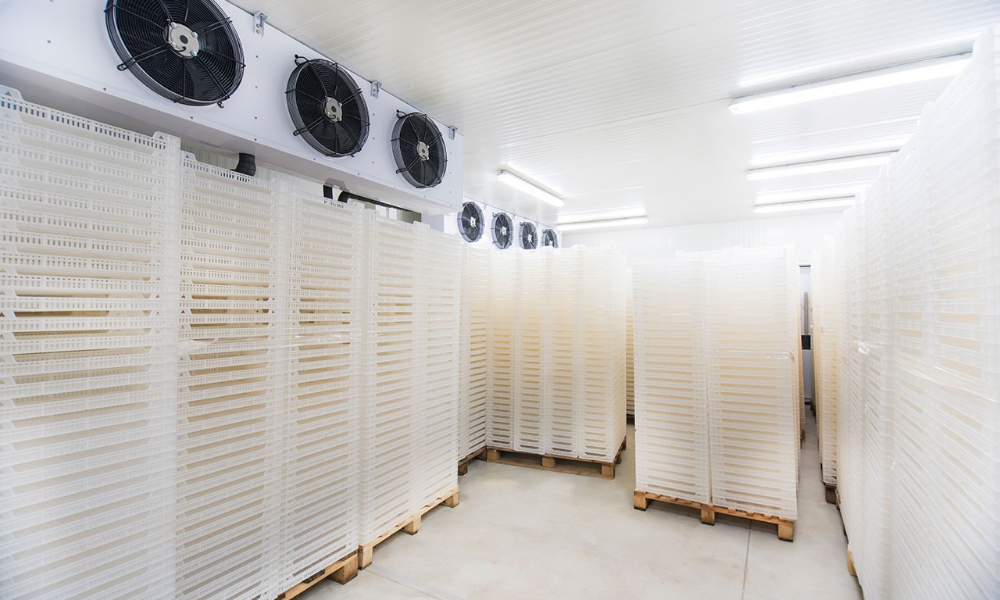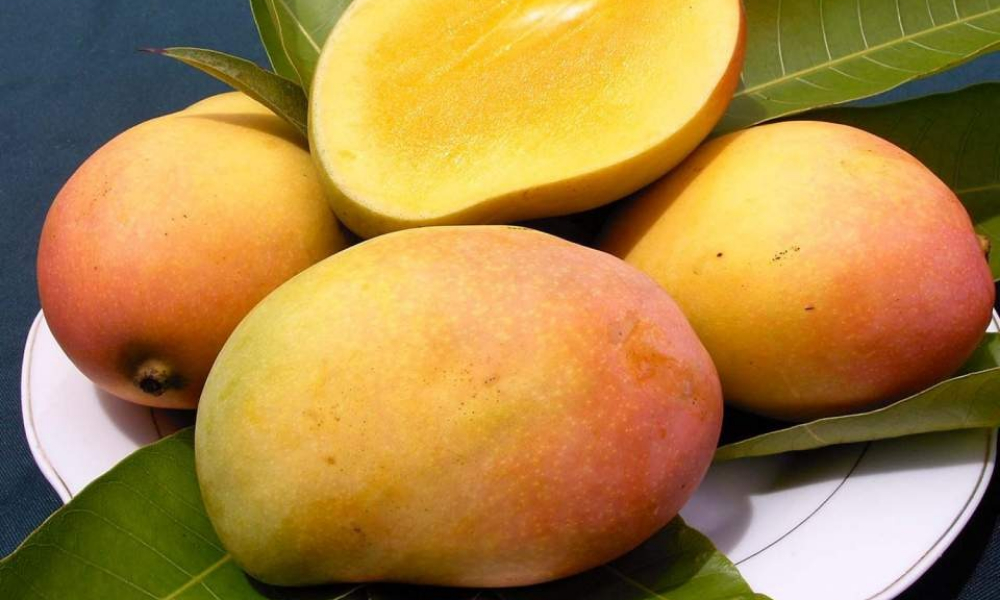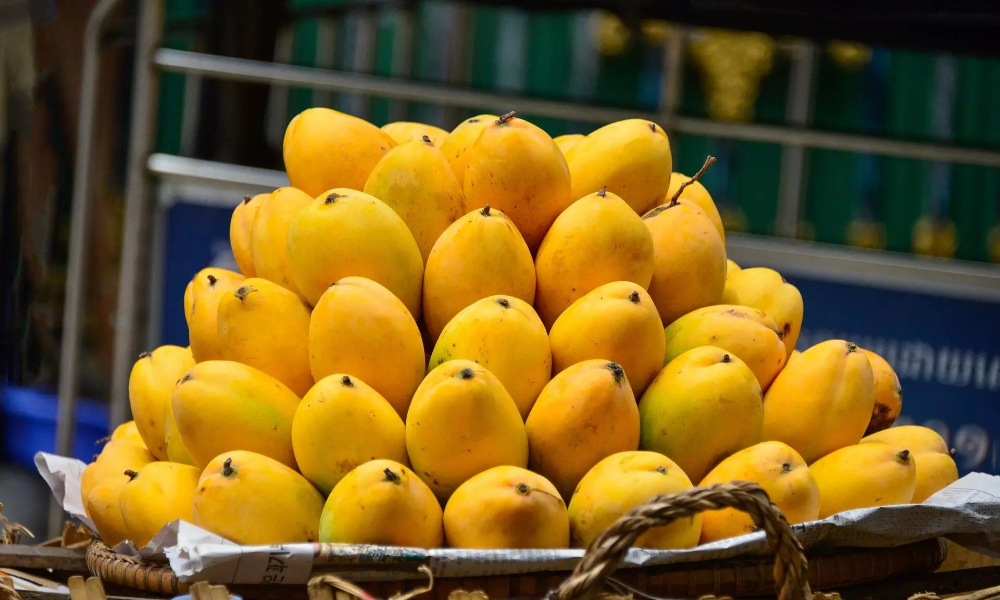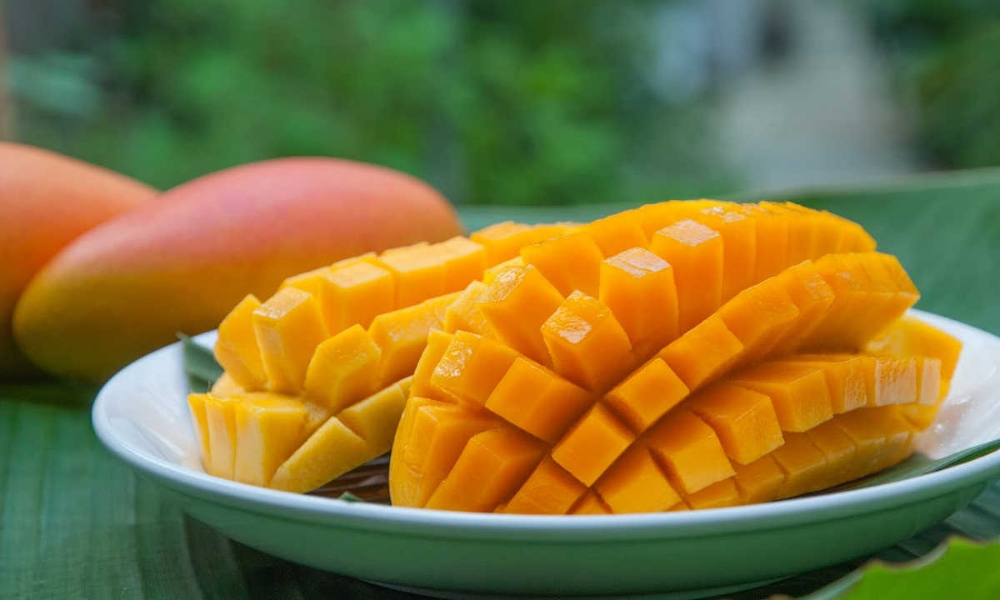Suitable Temperature and Humidity for Mangoes
Storage Temperature
The optimal temperature for storing mangoes is between 50°F (10°C) and 55°F (13°C). This temperature prevents the fruit from ripening too quickly and avoids spoilage. Storing mangoes at temperatures below 10°C can cause tissue damage and cold spots, reducing fruit quality. Therefore, mangoes should be kept within their specific temperature range.
Relative Humidity
The relative humidity should be between 85% and 95%. Maintaining this humidity level prevents the mangoes from drying out and shriveling. It also inhibits mold and fungal growth. Utilizing humidification systems in the cold storage can help maintain the proper humidity level and prevent the fruit from drying out.
Proper Ventilation
Adequate ventilation in cold storage for mangoes is crucial for maintaining fruit quality and preventing premature ripening. This section covers the importance of ventilation, ethylene gas management, and the use of filters.
Ethylene Gas Management
Ethylene gas is a natural plant hormone essential for fruit ripening. Mangoes produce ethylene during ripening, which can influence other fruits and accelerate their ripening process.
Role of Ethylene: Mangoes naturally produce ethylene gas during ripening, leading to chemical and physical changes such as color change, softening, and increased sweetness. Higher ethylene concentrations in the environment accelerate these processes, resulting in premature ripening and reduced fruit shelf life.
Proper Ventilation: Proper ventilation ensures continuous air circulation inside the cold storage, preventing ethylene buildup. Good ventilation helps maintain optimal ethylene levels, preserving the quality and freshness of mangoes. Suitable ventilation systems must be capable of consistently moving air within the storage to keep ethylene concentrations at optimal levels.
Air Circulation: Proper air circulation in the cold storage helps maintain uniform temperatures and ethylene concentrations throughout. This prevents gas accumulation in specific areas of the storage.
Use of Filters
Using ethylene-absorbing filters is an effective method for controlling ethylene gas concentration in cold storage. These filters are typically made from specific chemicals that can absorb and neutralize ethylene.
Ethylene Filters: Ethylene filters can be installed independently or as part of the ventilation system. These filters contain special absorbent materials that can separate and absorb ethylene from the air. Examples include activated carbon filters and potassium permanganate filters.
Overall, proper ethylene gas management through effective ventilation and the use of special filters helps maintain mango quality in cold storage. These measures ensure uniform, controlled ripening, extending the fruit's shelf life and preserving its nutritional value and natural flavor.
Packaging
Choosing the Right Materials:
- Ventilated Boxes: Using ventilated boxes that allow air circulation is crucial. These boxes help maintain fruit quality and prevent excessive pressure on mangoes.
- Packaging Materials: Appropriate packaging materials that protect mangoes during transport are essential. These materials should absorb excess moisture and protect the fruit from impacts and pressure.
Separating Damaged Fruit: Regularly inspect mangoes and separate damaged or spoiled fruit to prevent spoilage from spreading. Modern scanners and equipment can help quickly and accurately identify damaged fruit.
Use of Modern Technologies
Smart Control Systems: Using smart systems to precisely control temperature and humidity in cold storage helps maintain optimal conditions for storing mangoes. Additionally, sensors and monitoring systems for measuring environmental gas levels like ethylene can improve fruit storage quality.
Pre-Storage Conditions
Before storing mangoes in cold storage, they should be rapidly cooled to the desired internal temperature. This action slows the metabolic rate and extends the fruit's shelf life. Pre-cooling mangoes is a critical step in their storage process, helping improve quality and extend shelf life. Immediately after harvest, mangoes should be quickly cooled to reach the optimal internal temperature, slowing the metabolic rate and preventing premature ripening and spoilage.
Pre-Cooling Methods: Various methods are available for quickly cooling mangoes, including using cold air, cold water, and dry ice. Each method has its advantages and disadvantages, but all help reduce mango temperature, maintaining quality, freshness, and nutritional value. The pre-cooling process involves rapidly transferring mangoes to pre-cooling rooms, monitoring and controlling internal fruit temperature, and moving them to the main cold storage for optimal conditions. These measures slow the mangoes' metabolic rate and prevent spoilage, preserving their quality and extending shelf life.
Transporting Mangoes
Maintaining the cold chain during transport from harvest to final destination is vital. Using refrigerated trucks and keeping the mangoes at the appropriate temperature during transport helps preserve their quality. Storing mangoes in cold storage with all principles and modern technologies can significantly extend their shelf life. Attention to temperature, humidity, ventilation, packaging, separating damaged fruit, using modern technologies, and proper transport conditions are all key factors for successful mango storage. Following these guidelines ensures mangoes' quality, freshness, and nutritional value for longer periods, preventing spoilage and economic loss.
Arranging Mangoes in Cold Storage
The best way to arrange mangoes in cold storage prevents damage and maintains their quality and freshness.
Using Ventilated Boxes: Ventilated boxes that allow air circulation are essential for arranging mangoes. These boxes help maintain fruit quality and prevent excessive pressure on the mangoes.
Placing Boxes on Pallets: Mango boxes should be placed on wooden or plastic pallets to avoid direct contact with the cold storage floor. This improves air circulation around the boxes and maintains uniform temperature.
Proper Spacing Between Boxes: Adequate spacing between boxes ensures good air circulation, aiding proper ventilation and preventing ethylene buildup.
Stacking in Columns: Mango boxes should be stacked in columns without exceeding a certain height to avoid compression and damage.
Using Uniform Boxes: Using boxes of the same size and design helps optimize cold storage space and maintain balance in the arrangement.
Easy Access: The arrangement should allow easy access for inspection and handling, facilitating regular checks and removal of damaged fruit.
Continuous Monitoring: Continuous monitoring of temperature and humidity in the cold storage and precise control are crucial. Using smart sensors and monitoring systems helps maintain optimal conditions.
In summary, proper mango arrangement in cold storage with ventilated boxes, pallets, adequate spacing, column stacking, uniform boxes, and easy access helps maintain fruit quality and freshness. These measures improve ventilation, prevent damage, and maintain optimal storage conditions. Continuous monitoring and using modern equipment also enhance storage conditions and extend mango shelf life.





